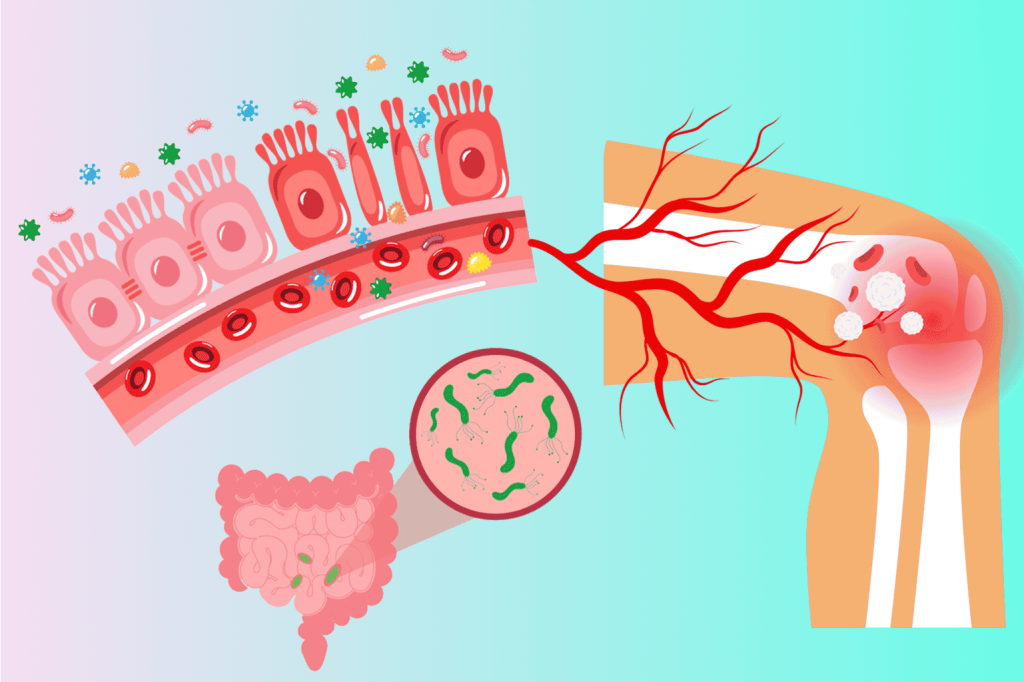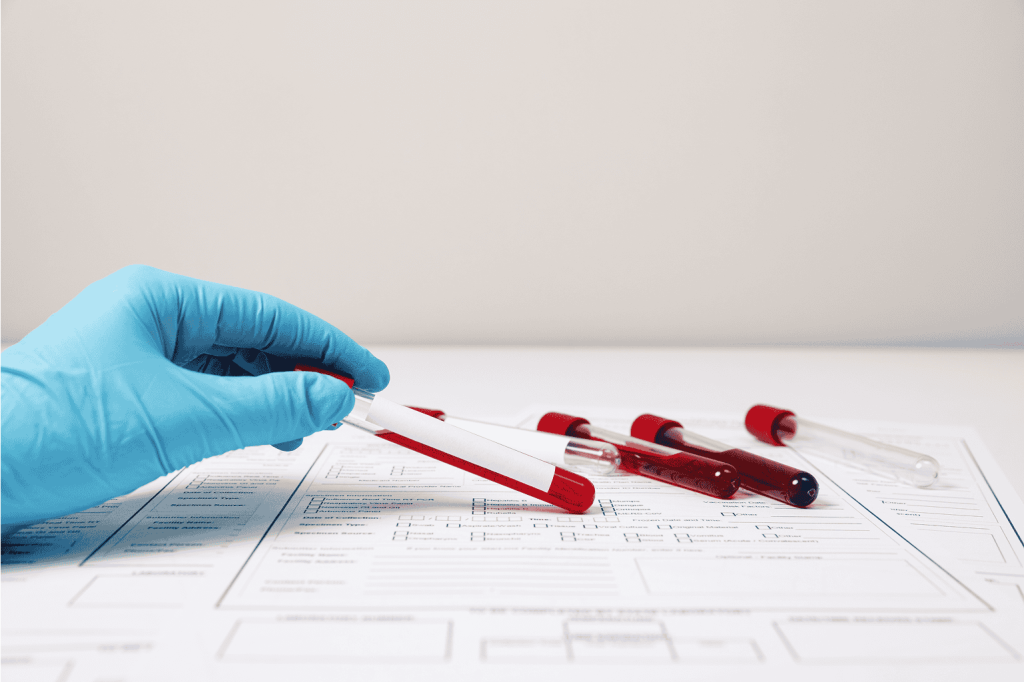How to Naturally Heal Arthritis: 6 Root-Cause Interventions That Actually Work

Table of Contents
Introduction
Two people walk into a doctor’s office with identical inflammatory marker readings. One develops diabetes. The other develops rheumatoid arthritis. Very similar systemic inflammation, completely different diseases. Why did your body choose to attack your joints?
Most arthritis content treats your condition like a broken part that needs fixing—offering generic “eat anti-inflammatory foods” advice, basic supplement lists, or gentle exercise routines. While these approaches contain elements of truth, they’re missing something crucial: arthritis isn’t a joint disease. It’s a whole-body systems breakdown that happens to manifest in your joints.
Here’s what virtually every other source gets wrong: they offer one-size-fits-all solutions instead of the cutting-edge protocols that functional medicine practitioners actually use to help patients achieve remission. They give you surface-level advice without the specific implementation details, dosing protocols, and advanced interventions that move the needle.
This article is different. We’re going to walk you through the same 6 comprehensive intervention systems that leading functional medicine clinics use to address arthritis at its root—including advanced protocols like carnivore elimination for autoimmune cases, gut-joint axis repair, functional movement therapy, nervous system reset techniques, and targeted compound protocols with specific dosing.
With these natural remedies for arthritis, you’ll get the exact implementation strategies, testing protocols, and integration methods that help people achieve significant symptom reduction, halted disease progression, and in many cases, clinical remission. This isn’t generic wellness advice—this is the systematic approach that actually works when you’re ready to address root causes instead of managing symptoms forever.
Why Your Body Chose Joints: Understanding Your Susceptibility Pattern

The question that haunts most arthritis sufferers isn’t just “how do I get better?” but “why me?” Why did your immune system decide to attack your joints while your friend with similar stress levels developed digestive issues, and your sibling with the same family history got diabetes instead?
The answer lies in your unique susceptibility matrix—a combination of genetic, environmental, and lifestyle factors that made your joints the vulnerable breaking point in your system.
Your Genetic Predisposition Sets the Stage
Certain gene variants make you more likely to develop specific types of arthritis. If you have rheumatoid arthritis, you likely carry HLA gene variations that cause your immune system to mistake joint proteins for foreign invaders. With osteoarthritis, collagen gene variants may impair your body’s ability to repair cartilage efficiently. These aren’t death sentences—they’re simply predispositions that require more attention to prevention and healing.
Equally important are your detoxification gene variants. People with sluggish MTHFR, GST, or CYP gene function often accumulate toxins in joint tissues because their bodies can’t efficiently process and eliminate environmental chemicals, heavy metals, and biotoxins.
Your Personal “Perfect Storm” Factors
Past injuries create inflammatory “memory” in tissues—old ankle sprains, car accidents, or repetitive stress patterns establish weak points where inflammation preferentially accumulates. Your nervous system also plays a role in where dysfunction manifests. Some people channel chronic stress into digestive problems; others, often those with trauma histories or high-stress careers, tend to hold tension in their musculoskeletal system.
Your occupational and movement patterns matter too. Years of poor posture, repetitive motions, or compensation patterns from old injuries create mechanical stress points that become inflammatory hot spots over time.
The Microbiome-Joint Connection
Perhaps most fascinating is the gut-joint axis. Specific bacterial overgrowths in your intestines can trigger autoimmune attacks on your joints through molecular mimicry—where bacterial proteins look similar enough to joint proteins that your immune system gets confused and attacks both.
Understanding Your Pattern
This isn’t about blame—it’s about understanding. When you recognize your specific vulnerability pattern, you can address the root causes more effectively. The following 6 intervention systems work precisely because they address multiple susceptibility pathways simultaneously, giving your body the comprehensive support it needs to heal.
The 6 Root-Cause Intervention Systems
1. The Gut-Joint Axis: Healing the Root of Autoimmune Arthritis

The connection between your gut and joints is so profound that many functional medicine practitioners consider arthritis primarily a gut disorder that happens to manifest in joint tissues. Leaky gut syndrome and microbiome dysbiosis are increasingly recognized as primary drivers of rheumatoid arthritis, psoriatic arthritis, and even osteoarthritis (Zhao et al., 2021).
Understanding Molecular Mimicry
When your intestinal barrier becomes permeable (“leaky gut”), undigested food particles and bacterial fragments enter your bloodstream. Your immune system creates antibodies against these foreign substances—but some of these antibodies also attack joint proteins that look similar to the gut invaders. This is why healing your gut often dramatically improves joint symptoms.
The Leaky Gut Repair Protocol
- Remove the irritants: Gluten is particularly problematic because it directly increases intestinal permeability through zonulin release. Other common triggers include dairy, alcohol, NSAIDs, and foods you’re individually sensitive to.
- Rebuild the barrier: L-glutamine (5-10g daily) provides fuel for intestinal cells to repair the gut lining. Slippery elm and marshmallow root create a protective mucilage layer. Collagen provides the amino acids needed for tight junction repair.
- Restore beneficial bacteria: Rather than random probiotics, focus on specific strains. Lactobacillus casei and Bifidobacterium longum have research supporting their use in rheumatoid arthritis. Butyrate-producing bacteria are crucial—feed them with resistant starch from cooled potatoes or green bananas if you tolerate them.
Pathogen Treatment: The Hidden Arthritis Triggers
Many people with chronic arthritis harbor gut pathogens that maintain systemic inflammation: SIBO (Small Intestinal Bacterial Overgrowth), candida overgrowth, or parasites. These create a constant inflammatory load that prevents healing.
Consider comprehensive stool testing (GI-MAP or GI360) if joint symptoms persist despite dietary changes. Treating underlying infections often leads to dramatic improvements that no amount of diet or supplementation could achieve.
2. Nutrition as Medicine: Finding YOUR Individual Triggers

Much of nutrition’s power in arthritis comes from its effects on gut health—but food choices also influence inflammation, metabolism, and repair directly.
The biggest mistake in arthritis nutrition is assuming everyone responds to the same foods the same way. The truth is, there’s tremendous individual variation—some people thrive on plant-heavy diets while others need mostly animal foods, some do well with dairy while others react severely to even trace amounts.
Start With Universal Inflammatory Triggers
While individual foods vary, certain substances create inflammation in virtually everyone: refined sugars, high fructose corn syrup, seed oils (canola, soybean, sunflower), and heavily processed foods loaded with synthetic chemicals and preservatives. Most people instinctively know these foods aren’t supporting their health.
The Systematic Elimination Approach
Rather than following someone else’s “arthritis diet,” your goal is to discover YOUR specific inflammatory triggers through systematic elimination and reintroduction.
- Carnivore as the Ultimate Reset: Not because everyone should eat carnivore forever, but because it’s the most comprehensive elimination diet possible. When you eat only grass-fed meats, wild fish, pastured eggs, and organ meats for 30 days, you remove virtually every potential dietary trigger. This creates a clean baseline to systematically test foods against.
- The Reintroduction Process: After your elimination phase, reintroduce food groups one at a time—dairy for 3 days, then grains for 3 days, then nightshades, etc. Track joint pain, stiffness, energy, sleep, and mood. Your body will clearly signal which foods trigger inflammation and which support healing.
Essential Nutrients for Joint Health
Regardless of your individual dietary pattern, certain nutrients consistently support joint repair: omega-3 fatty acids (2-3g EPA daily), collagen (10-20g daily), vitamin K2 with D3, and sulfur compounds from foods like eggs and garlic. The source of these nutrients can vary based on your individual tolerance.
Your goal should be to discover the specific dietary pattern that minimizes your inflammation while providing optimal nutrition. For some, this might be a modified Mediterranean approach. For others, it could be a higher-fat, lower-carb pattern, or even a mostly carnivorous approach with select plant foods.
Individual Variation in Food Response
There is significant variation in how individuals with arthritis respond to foods. While some thrive on plant-based diets, others may feel better with more animal foods or need to avoid even small amounts of certain triggers like dairy. This individual sensitivity is supported by evidence showing that up to 30–40% of rheumatoid arthritis patients improve substantially by identifying and excluding foods that precipitate their symptoms through elimination diets (Darlington et al., 1986). Double-blind trials have demonstrated that rigorous elimination—removing suspect foods for a set period and reintroducing them one by one—can reveal specific dietary triggers that worsen joint pain and inflammation
3. Functional Movement & Biomechanics: Fixing the Mechanical Root

Most arthritis advice tells you to “stay active” or “try gentle exercise,” but this misses a crucial point: arthritis is often a mechanical problem that creates inflammatory consequences. Poor movement patterns create uneven joint loading, leading to “hot spots” of stress that become chronically inflamed. Fix the mechanics, and you often eliminate the need for ongoing inflammation management.
Why Generic Exercise Fails
Running, cycling, or gym workouts can actually worsen arthritis if you’re moving with poor patterns. When your gait is off, your knee alignment is compromised, or your core isn’t stabilizing properly, exercise becomes repetitive microtrauma rather than healing movement.
Functional Patterns and Gait Therapy
These approaches analyze how your body actually moves through space and correct the dysfunctional patterns that create joint stress. A Functional Patterns practitioner can identify why your left knee hurts (often because your right hip isn’t functioning properly) and give you specific exercises to restore optimal movement sequencing.
The Foundation: Fix Your Feet
Collapsed arches and poor foot function create a cascade of problems up the kinetic chain. When your feet don’t properly distribute ground reaction forces, your knees compensate with valgus stress, your hips tighten, and your spine overworks. Foot function rehabilitation—often involving specific strengthening exercises and sometimes orthotics—can eliminate knee and hip arthritis symptoms that seemed unrelated.
Gentle Pattern Retraining
- Feldenkrais Method uses slow, mindful movements to retrain your nervous system’s movement patterns. It’s particularly effective for people whose arthritis developed after injuries or trauma.
- Egoscue Method provides specific postural correction exercises to realign your body and eliminate compensatory patterns that stress joints.
- DNS (Dynamic Neuromuscular Stabilization) uses developmental movement patterns to restore core stability and optimal joint function.
Mindful Walking: The Power of Spirals and Counter-Rotation
For most people, the safest place to begin isn’t with complicated exercises, but by becoming mindful of how your body naturally moves. Healthy, efficient walking isn’t about stiff, straight lines—it’s a dance of spirals and counter-rotations:
- Imagine your shoulders as wheels gently rolling backward as you walk. This subtle cue helps balance your torso and counteracts the forward roll of your hips.
- Let your hips roll forward in an alternating rhythm, right to left, almost like a slow wave.
- Lead from your hip instead of your foot. Allow your leg to swing freely beneath you, initiated by the motion of your pelvis rather than overreaching with your stride.
- Feel the spirals. Instead of forcing straight lines, notice how your arms, legs, and spine want to move in gentle, coordinated corkscrews. This is how your body naturally distributes force and minimizes strain.
The goal isn’t perfection or memorizing a checklist—it’s to feel more relaxed, connected, and balanced with every step. Start practicing these sensations for a few minutes each walk. Over time, you’ll notice less tension, more ease, and often less pain.
When to Seek Professional Help
If you experience persistent pain, visible limp, or can’t tell if your gait is improving, consider working with a movement specialist—such as a physical therapist, Functional Patterns practitioner, or someone trained in gait analysis. Even a single session of professional feedback can help you avoid confusion and fast-track your results.
Ultimately, focus on walking with healthy, mindful gait mechanics, rather than pushing for high-intensity exercise. Daily mobility work targeting your specific restrictions will provide more benefit than sporadic gym sessions. The true goal is to restore optimal movement patterns so your joints can function as they’re designed to—without creating inflammation through mechanical stress.
4. Nervous System Reset: Breaking the Stress-Inflammation-Pain Cycle

Chronic arthritis isn’t just about inflamed joints—it’s about a nervous system stuck in sympathetic overdrive, perpetually signaling danger to your immune system. When your autonomic nervous system is dysregulated, it maintains inflammatory cascades even after you’ve addressed diet and movement. Mounting evidence shows that nervous system imbalance can perpetuate chronic inflammatory conditions like arthritis, and that targeted interventions are required to restore immune equilibrium (Peters et al., 2010; Ongür et al., 2010).
The Stress-Arthritis Connection
Chronic stress elevates cortisol and pro-inflammatory cytokines like TNF-α and IL-6—the same markers elevated in rheumatoid arthritis. More importantly, stress keeps your immune system hypervigilant, making it more likely to attack your own tissues. Breaking this cycle requires specific interventions that measurably shift your nervous system into parasympathetic dominance.
Heart Rate Variability (HRV) Training
HRV measures the variation between heartbeats and indicates nervous system resilience. Lower HRV correlates with higher inflammation and worse arthritis outcomes. Using devices like HeartMath or Elite HRV, practice coherent breathing (5 seconds in, 5 seconds out) while monitoring your HRV score. Studies show this can reduce inflammatory markers within weeks.
Diaphragmatic Breathing Protocols
Shallow chest breathing maintains stress physiology, while deep diaphragmatic breathing activates the vagus nerve and reduces inflammation. Practice box breathing (4 counts in, 4 hold, 4 out, 4 hold) for 10 minutes twice daily. The goal isn’t relaxation—it’s measurable physiological change.
Cold Exposure Therapy
Cold water immersion or ice baths provide potent anti-inflammatory effects while training nervous system resilience. Start with 30-second cold showers, gradually working up to 2-3 minutes. The key is maintaining calm breathing during cold exposure—this trains your nervous system to stay regulated under stress.
Somatic and Fascial Work
- Trauma Release Exercises (TRE): help discharge trapped stress from your nervous system through natural tremoring. This can release tension patterns that pull joints out of alignment.
- Fascial release work: (self-massage, foam rolling, or professional bodywork) addresses the connection between held emotional stress and physical tension. Chronic stress literally changes fascia texture, which can amplify joint pain signals.
5. Circadian Optimization and Grounding: Restoring Natural Anti-Inflammatory Rhythms

Your body’s inflammatory and healing processes follow precise circadian timing. When these rhythms are disrupted, chronic inflammation can persist regardless of diet or supplements (Lee et al., 2024; Zheng et al., 2024). Restoring natural light-dark cycles and connection with the earth provides a powerful, often overlooked form of anti-inflammatory medicine
Circadian Optimization: Timing Your Biology
Your immune system follows a 24-hour cycle—inflammatory responses peak during the day for tissue repair, then resolve at night during sleep. Disrupted circadian rhythms keep inflammation “stuck on,” preventing the natural resolution that should occur nightly.
- Morning light protocol: Get 10-30 minutes of direct sunlight exposure within 2 hours of waking. This isn’t through windows—you need unfiltered light to properly set your circadian clock and optimize cortisol awakening response. On cloudy days, extend exposure time to 45-60 minutes.
- Evening wind-down: Begin dimming lights 2-3 hours before bed. Use warm, amber lighting and avoid blue light from screens. Your bedroom should be completely dark—blackout curtains, cover LED lights, remove electronic devices.
- Sleep timing consistency: Go to bed and wake at the same time daily, even on weekends. This consistency is more important than total sleep duration for inflammatory regulation.
Grounding: Reconnecting with Earth’s Anti-Inflammatory Field
The earth maintains a negative electrical charge that provides free electrons—natural antioxidants that neutralize inflammatory free radicals in your body. Modern life disconnects us from this healing resource through rubber shoes and indoor living.
- Daily grounding protocol: Spend minimum 20 minutes daily in direct skin contact with the earth—barefoot on grass, sand, concrete, or natural stone. Avoid artificial surfaces like asphalt or synthetic materials.
- Indoor solutions: Grounding mats connected to properly grounded electrical outlets can substitute when weather or location prevents outdoor grounding. Use during sleep or while working at a desk.
- Timing integration: Combine morning sunlight exposure with barefoot grounding for maximum circadian and anti-inflammatory benefits.
Start with consistent morning light exposure and evening light management—these provide the foundation for all other healing interventions. Add grounding as weather and schedule permit. For deeper understanding of how sunlight specifically supports health, read our comprehensive guide on sun exposure benefits.
These aren’t luxury wellness practices—they’re fundamental biological inputs your body requires for optimal inflammatory regulation and joint healing.
6. Root-Cause Functional Testing: Getting Answers Instead of Guessing

Most arthritis sufferers spend years trying random treatments without understanding what’s actually driving their inflammation. Functional testing reveals the specific imbalances, infections, and dysfunctions creating your symptoms—allowing you to target interventions precisely instead of throwing supplements at the wall hoping something sticks.
GI-MAP or GI360: The Gut-Joint Roadmap
Comprehensive stool testing, like the GI-MAP or GI360, provides an in-depth look at what’s really happening inside your gut. These tests go far beyond traditional lab work, detecting pathogenic bacteria, parasites, candida overgrowth, and small intestinal bacterial overgrowth (SIBO)—all of which are common but frequently hidden drivers of persistent arthritis. What makes these panels so valuable for joint health is their ability to quantify not just the presence of pathogens, but also the balance of beneficial bacteria and the integrity of your gut barrier.
The results can pinpoint exactly which pathogens need treatment, where your microbiome is deficient, and how much gut-driven inflammation (measured by markers like calprotectin and secretory IgA) may be fueling your joint symptoms. With this roadmap, you and your practitioner can tailor interventions to repair your gut, reduce systemic inflammation, and move the needle on arthritis that hasn’t responded to generic protocols.
DUTCH Test: The Hormone-Joint Connection
Hormones play a critical role in connective tissue health, inflammation, and the ability of your body to repair itself. The DUTCH test is a comprehensive hormone panel that measures not only total levels of estrogen, testosterone, DHEA, and cortisol, but also how your body produces, metabolizes, and eliminates these hormones throughout the day. Imbalances—such as low testosterone, low DHEA, or high estrogen—can directly weaken cartilage, increase joint pain, and stall healing. Chronic dysregulation of cortisol, the main stress hormone, can keep inflammation elevated no matter what else you change.
The DUTCH test gives you a detailed map of your hormonal landscape, revealing patterns that traditional blood tests can’t see. It can show whether your cortisol rhythm is optimal, whether estrogen dominance is driving inflammation, or if low anabolic hormones are impairing tissue repair. With these insights, targeted hormone support or lifestyle changes can be implemented to break through stubborn plateaus in joint healing and overall well-being.
Organic Acids Test (OAT): Cellular Function and Hidden Stressors
The Organic Acids Test (OAT) measures dozens of metabolic byproducts in your urine, offering a window into how well your cells are producing energy, handling toxins, and managing inflammation. High levels of certain acids, like oxalate, can directly correlate with joint pain, while markers of poor mitochondrial function suggest your cells are struggling to meet the demands of repair. Neurotransmitter metabolism and toxic exposures, often invisible in other testing, are revealed here.
This test allows you to identify blocks in energy production, detoxification challenges, and even neurotransmitter imbalances that can amplify pain perception. It’s especially valuable if you have arthritis that doesn’t improve with diet and lifestyle alone, or if you suspect hidden mold, chemical, or metabolic stressors are sabotaging your recovery.
Tick-Borne Illness Panels: The Silent Joint Destroyers
Tick-borne infections like Lyme disease and its co-infections (Bartonella, Babesia, Ehrlichia) are massively underdiagnosed yet potent causes of chronic joint pain and autoimmune arthritis. Unfortunately, standard Lyme tests miss the majority of cases. Specialized panels from labs such as IGeneX or Galaxy Diagnostics employ more sensitive methods, increasing the chances of identifying stealth infections that keep your immune system in constant overdrive.
These panels can reveal previously hidden infections that drive ongoing immune activation and joint inflammation—often explaining why nothing else has worked. For anyone with unexplained arthritis, migratory pain, or poor response to typical interventions, ruling out tick-borne illness is an essential step toward true root-cause healing.
Food Sensitivity Testing: Beyond Elimination Diets
While elimination diets remain the gold standard for finding dietary triggers, food sensitivity testing can identify delayed immune reactions (IgG or IgA mediated) that don’t always show up with immediate symptoms. These panels are particularly helpful for uncovering cross-reactive foods and tracking how your immune system evolves as gut healing progresses.
If you’ve already tried elimination diets with limited clarity, struggle with multiple sensitivities, or want to objectively monitor your healing, targeted food sensitivity testing can fill in the gaps and guide your next steps. Used correctly and interpreted by an experienced practitioner, these tests can refine your nutrition plan and support deeper, more sustained remission.
Bonus Protocol: Targeted Natural Compounds for Symptom Relief

While the core systems above are designed to address the underlying causes of arthritis, it’s often necessary to manage symptoms and protect joint tissue during the healing process. Evidence-based natural compounds can reduce pain, modulate inflammation, and support repair—without the risks and side effects of steroids or opioid painkillers.
Think of these tools as supportive allies: they help you stay mobile, improve quality of life, and minimize flare-ups as you pursue deeper root-cause healing. Used strategically, they bridge the gap between short-term relief and long-term transformation.
Forget random anti-inflammatory supplement shopping. Effective arthritis supplementation means using specific compounds with proven mechanisms, optimal dosing, and bioavailability strategies. Each compound below targets different inflammatory pathways, allowing you to create a targeted protocol based on your specific presentation.
Boswellia Serrata (Frankincense): The Cartilage Protector
Boswellia is a botanical extract renowned for its ability to inhibit the 5-LOX enzyme, a key driver of cartilage breakdown and inflammation in arthritis. Unlike NSAIDs, which only block surface-level COX enzymes and can further harm cartilage over time, Boswellia targets a deeper inflammatory cascade and is unique in its ability to actually protect joint tissue rather than simply masking pain. This makes it especially valuable for those seeking to address both pain and disease progression simultaneously.
For therapeutic results, use a standardized extract of 300–500 mg, containing at least 65% boswellic acids, taken three times daily with meals. The most active component, AKBA (3-acetyl-11-keto-β-boswellic acid), should be noted on the label for maximal efficacy. Consistency matters, so dose with meals to enhance absorption and track your response over several weeks.
Curcumin: Bioavailability is Everything
Curcumin, the active compound in turmeric, is widely studied for its anti-inflammatory effects that can rival prescription medications. However, most people don’t benefit from turmeric powder alone due to extremely poor absorption. The real advantage of curcumin lies in its ability to dampen inflammatory cytokines and oxidative stress, making it a powerful adjunct in the natural management of arthritis pain and swelling.
Optimal results come from taking 500–1000 mg curcumin twice daily with a source of fat and piperine (black pepper extract), which increases absorption manyfold. Advanced formulas like liposomal curcumin or curcumin phytosome can offer even better bioavailability. Always take curcumin with meals, and look for third-party tested supplements to ensure potency and purity.
Fisetin and Quercetin: The Senolytic Duo
Fisetin and quercetin are plant-derived flavonoids that function as senolytics—agents that clear “zombie cells” (senescent cells) which accumulate in aging and arthritic joints, fueling chronic inflammation and tissue breakdown. By clearing these dysfunctional cells, this duo helps reduce joint pain, stiffness, and inflammation, making them especially promising for age-related or degenerative arthritis.
A practical protocol is fisetin at 100 mg daily and quercetin at 500 mg twice daily, always taken with a fat-containing meal to maximize absorption. For best results, avoid taking these flavonoids around the time of exercise, as they can blunt some of the beneficial adaptations to training. Consistent daily use over several weeks is needed for senolytic effects to accumulate.
MSM: The Sulfur Donor
MSM (methylsulfonylmethane) is a potent, bioavailable source of sulfur—an essential element for the repair and maintenance of collagen, cartilage, and connective tissue. Beyond structural support, MSM also exhibits notable anti-inflammatory activity, reducing pain and stiffness in clinical studies and providing a supportive environment for joint healing.
Begin MSM supplementation with 1–2 grams daily, gradually increasing to a typical therapeutic range of 3–6 grams divided into two or three doses throughout the day. Sensitive individuals may need to start lower and build up to avoid digestive upset. In some cases, doses up to 8–10 grams are used under practitioner supervision. Track your joint symptoms and energy as you titrate the dose upward.
Low Dose Naltrexone (LDN): The Immune Modulator
LDN is a unique therapy that works by temporarily blocking opioid receptors, which stimulates the body to produce more endorphins and, in turn, recalibrates immune function. It has shown particular promise for autoimmune forms of arthritis, where traditional immune suppression often falls short or brings unwanted side effects.
Because LDN is a prescription therapy, it must be sourced from a compounding pharmacy in low-dose form. The typical protocol starts at 1.5 mg nightly, increasing by 0.5 mg each week until reaching a maximum of 4.5 mg per night. LDN is well-tolerated for most, but as with all immune-modulating interventions, work with an experienced provider to monitor your response and ensure optimal results.
FAQ: Common Questions About Healing Arthritis Naturally
What if my arthritis pain or inflammation increases when I try a new protocol?
Always pay close attention to your body’s feedback. If a new supplement, movement practice, or dietary change triggers a noticeable flare or new pain, pause that intervention. Every individual’s system is unique, and even root-cause strategies can reveal sensitivities or underlying issues. Give yourself a break and consult with a qualified practitioner if symptoms persist or worsen.
Can I use these natural interventions alongside prescription medications or conventional care?
Yes—most of the approaches outlined here are designed to support and enhance, not replace, medical treatment. In fact, integrating natural protocols with your doctor’s recommendations is often the fastest route to improvement. Just be sure to check with your prescribing practitioner before making significant changes to medication or supplement routines, especially if you’re taking immune-modulating drugs.
How do I know which protocol or supplement is making a difference?
Introduce only one new change at a time, whether it’s a supplement, dietary intervention, or new exercise routine. Track your joint pain, mobility, energy, and other symptoms for at least 1–2 weeks before adding something else. Most breakthroughs happen when you combine patience with a clear system for tracking your progress.
Is it safe to combine several natural interventions at once?
Most of these strategies are designed to be synergistic—addressing root causes from multiple angles is often what’s needed for deep healing. However, it’s wise to go slowly. Start with the systems that feel most relevant to your own history and symptoms, then layer in others as your confidence and results grow. When in doubt, consult with a practitioner trained in functional or integrative medicine.
When to Seek Help from a Holistic or Functional Medicine Practitioner
While many people experience significant improvement with root-cause protocols, there are times when professional support is invaluable:
- Your arthritis symptoms persist, worsen, or begin to limit your daily life despite your efforts.
- You notice new symptoms (such as unexplained fever, swelling, or neurological changes).
- You feel overwhelmed by the complexity of testing, protocols, or supplement options.
- You want advanced testing or personalized guidance to accelerate results.
A skilled practitioner can help identify hidden drivers, interpret lab results, and customize your healing plan for lasting success.
Go Deeper: Master the Art & Science of Natural Healing
If you’ve found these advanced arthritis strategies helpful, imagine how much more you could do with a complete, accredited education in natural and functional health.
At Scholistico, we believe that real healing happens when you address the whole person—body, mind, and lifestyle. Our Naturopathy Practitioner Certification Course gives you the frameworks, protocols, and scientific knowledge to support not only your own healing, but to help others reclaim their health from arthritis and other chronic conditions.
Whether you want to become a certified practitioner, optimize your personal recovery, or add systems-based healing to your professional skill set, our course covers:
- Comprehensive root-cause assessment: Gut-joint axis, metabolic health, biomechanics, nervous system, and advanced testing.
- Clinical-grade protocols: Nutrition, movement, targeted supplementation, mind-body interventions, and environmental medicine.
- Practical, real-world application: Step-by-step protocols, client resources, and case studies.
- Accredited certification, recognized internationally.
Ready to become a confident, skilled leader in holistic and functional health?
Want the most comprehensive toolkit to transform lives—yours and others?
Explore our Complete Natural Health Certification Bundle, which includes Naturopathy, Holistic Nutrition, Holistic Health, and more. This all-in-one program equips you to tackle not just arthritis, but the full spectrum of modern chronic illness—giving you the power to restore health naturally and with confidence.








Responses